How To Upgrade To A Saltwater Pool System
As environmental awareness continues to rise, more and more pool owners are seeking sustainable alternatives to traditional chlorine pools. One such option gaining popularity is the saltwater pool system. Known for its eco-friendly benefits and improved swimming experience, upgrading to a saltwater pool can be both an environmentally responsible choice and a long-term investment in your pool's health and longevity. Unlike traditional chlorine pools, which require the regular addition of chlorine tablets or liquid, saltwater pools use a salt chlorine generator to convert salt into chlorine. This process provides a consistent level of chlorine, reducing the need for frequent maintenance and the harsh chemical smell often associated with traditional pools. Additionally, saltwater pools are gentler on the skin and eyes, making for a more pleasant swimming experience. In this comprehensive guide, we'll delve into the intricacies of making the switch to a saltwater pool, discussing everything from the initial installation and potential costs to the long-term care and maintenance. We'll also cover the environmental benefits of reducing chemical usage and the health advantages for swimmers. Ensuring you have all the information needed to make an informed decision, this guide aims to be your go-to resource for understanding the many advantages of saltwater pool systems.
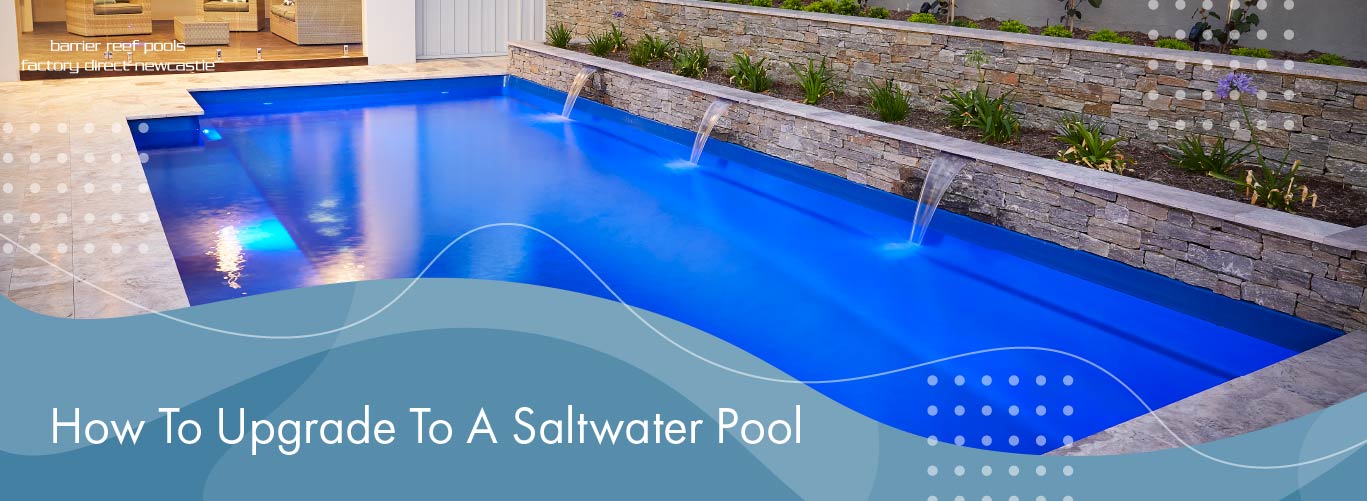
Understanding Saltwater Pools: Benefits and Misconceptions
Benefits of Saltwater Pools:
- Gentler on Skin and Eyes: Unlike traditional chlorine pools, saltwater pools produce chlorine naturally through a process called electrolysis, resulting in softer water that’s less likely to cause irritation.
- Lower Chemical Costs: By generating its own chlorine, a saltwater system reduces the need for purchasing and storing large amounts of chemical chlorine.
- Less Maintenance: With automated chlorine generation, saltwater pools require fewer interventions to maintain proper chemical balance.
- Eco-Friendly: Reduced reliance on harsh chemicals contributes to a smaller environmental footprint.
Common Misconceptions:
- “Saltwater Pools are Chlorine-Free”: A prevalent misconception is that saltwater pools do not use chlorine. In reality, they generate chlorine from salt, making it a more natural and controlled process.
- “Saltwater Pools Taste Like the Ocean”: The salt concentration in a saltwater pool is much lower than that of seawater, making it virtually undetectable to taste.
- “Upgrading is Complicated and Costly”: While there is an initial investment, the long-term savings and ease of maintenance often outweigh the upfront costs.
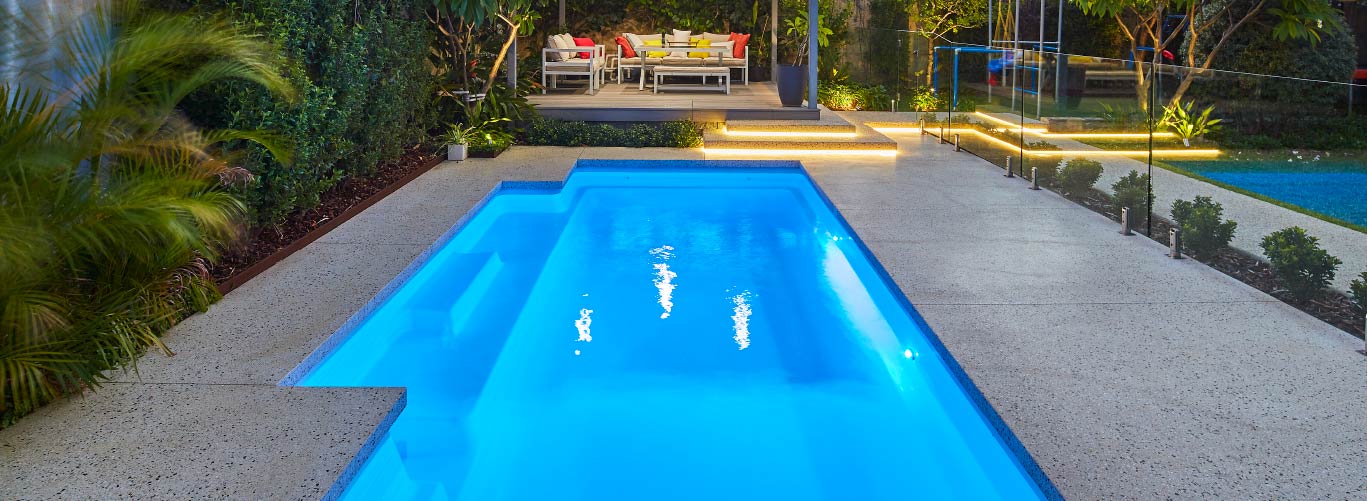
The Upgrade Process: Steps to Transition to a Saltwater Pool
Upgrading to a saltwater pool is a straightforward process involving several key steps:
Step 1: Evaluate Your Existing Pool Equipment
Before starting the upgrade, assess the condition of your current pool equipment. Ensure that your pool’s structure and plumbing are in good shape to handle the new system.
Step 2: Choose a Saltwater Chlorine Generator (SWG)
Selecting the right SWG is crucial. The generator should match your pool size and usage level. Consult with a pool professional to find the best fit for your needs.
Step 3: Drain and Clean the Pool
Draining and thoroughly cleaning your pool ensures that no residual chemicals interfere with the new saltwater system. Remove any debris and scrub the surfaces clean.
Step 4: Install the Saltwater Chlorine Generator
Hire a qualified technician to install the SWG. This involves connecting the generator to your pool’s filtration system and setting up the control unit.
Step 5: Add Salt to the Pool
Calculate the amount of salt needed based on your pool’s volume. Spread the salt evenly and allow it to dissolve fully before turning on the SWG.
Step 6: Balance the Water Chemistry
After the salt dissolves, balance your pool’s water chemistry. Test for pH, alkalinity, and calcium hardness, and adjust as necessary.
Step 7: Start the System
Turn on the SWG and let it run for a few hours. Monitor the chlorine levels to ensure they’re within the recommended range.
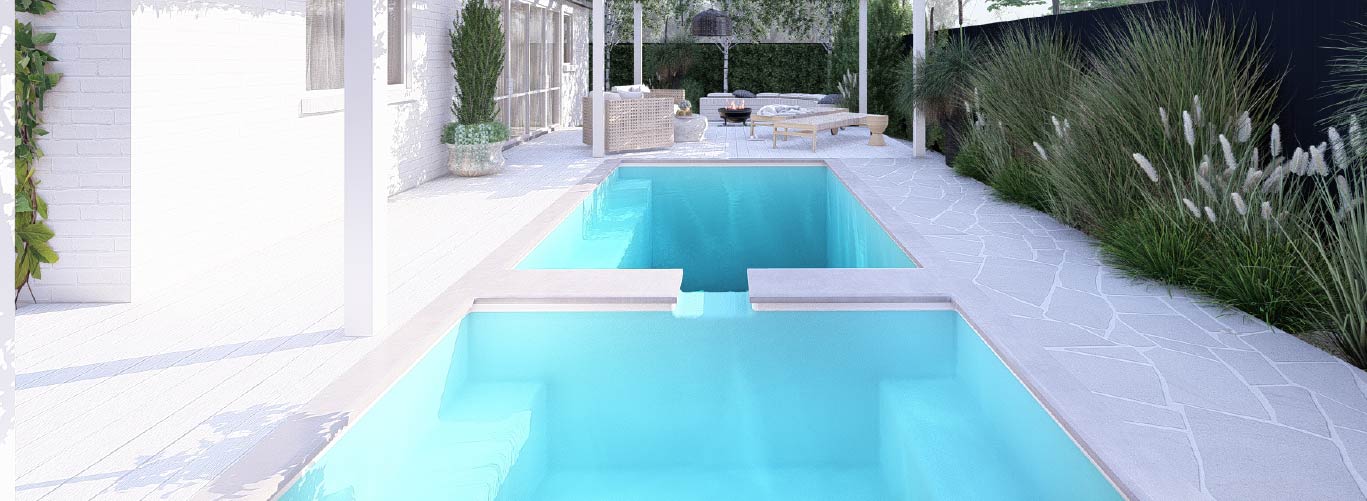
Maintenance of Saltwater Pools: Tips for Optimal Function
Although saltwater pools are relatively low-maintenance, regular upkeep is still essential for optimal performance:
- Regular Testing: Test your pool’s water chemistry weekly. Pay close attention to pH levels, chlorine levels, and salt concentration.
- Inspect the SWG: Check the generator cell regularly for calcium buildup and clean it as needed. Most SWGs come with a self-cleaning feature but manual cleaning might occasionally be required.
- Monitor Salt Levels: Ensure that the salt concentration stays within the manufacturer’s recommended range, typically between 2,700 and 3,400 parts per million (ppm).
- Seasonal Maintenance: Perform a thorough inspection and cleaning of the pool’s components at the beginning and end of each swimming season.
Environmental Impact: How Saltwater Pools Contribute to Sustainability
Saltwater pools offer several environmental benefits over traditional chlorine pools:
- Reduced Chemical Usage: By generating chlorine through a natural process, saltwater pools decrease reliance on chemical chlorine, reducing environmental pollution.
- Lower Carbon Footprint: The reduced need for chemical transportation and storage helps lower the overall carbon footprint associated with pool maintenance.
- Water Conservation: Saltwater pools often require less frequent water changes, contributing to water conservation efforts.
Cost Analysis: Long-term Savings and Investment Considerations
While the initial cost of upgrading to a saltwater system can be significant, it is important to consider the long-term savings:
- Initial Investment: The cost of getting a saltwater chlorine generator varies widely based on size and features.
- Reduced Chemical Costs: Over time, buying fewer chemicals can lead to notable savings annually.
- Lower Maintenance Costs: Automated chlorine generation can reduce the need for frequent maintenance, saving both time and money.
The Future of Pool Systems and the Importance of Sustainable Choices
Upgrading to a saltwater pool system is an investment in both your comfort and the environment. With benefits that include gentler water, lower chemical costs, and reduced maintenance, it’s easy to see why so many pool owners are making the switch. Moreover, the positive environmental impact aligns with growing trends towards sustainable living.
As you consider upgrading your pool system, remember that the future of pool maintenance is moving towards eco-friendly alternatives. By choosing a saltwater pool, you’re not only enhancing your swimming experience but also contributing to a more sustainable world. If you’re ready to take the plunge, consult with a pool professional today and start enjoying the myriad benefits of a saltwater pool system.
How To Upgrade To A Saltwater Pool System
As environmental awareness continues to rise, more and more pool owners are seeking sustainable alternatives to traditional chlorine pools. One such option gaining popularity is the saltwater pool system. Known for its eco-friendly benefits and improved swimming experience, upgrading to a saltwater pool can be both an environmentally responsible choice and a long-term investment in your pool's health and longevity. Unlike traditional chlorine pools, which require the regular addition of chlorine tablets or liquid, saltwater pools use a salt chlorine generator to convert salt into chlorine. This process provides a consistent level of chlorine, reducing the need for frequent maintenance and the harsh chemical smell often associated with traditional pools. Additionally, saltwater pools are gentler on the skin and eyes, making for a more pleasant swimming experience. In this comprehensive guide, we'll delve into the intricacies of making the switch to a saltwater pool, discussing everything from the initial installation and potential costs to the long-term care and maintenance. We'll also cover the environmental benefits of reducing chemical usage and the health advantages for swimmers. Ensuring you have all the information needed to make an informed decision, this guide aims to be your go-to resource for understanding the many advantages of saltwater pool systems.
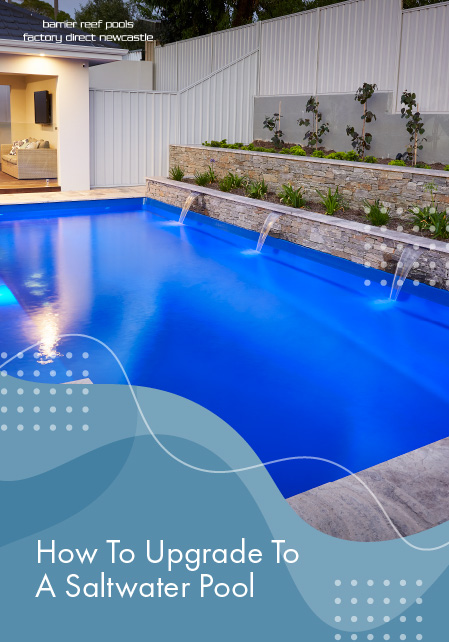
Understanding Saltwater Pools: Benefits and Misconceptions
Benefits of Saltwater Pools:
- Gentler on Skin and Eyes: Unlike traditional chlorine pools, saltwater pools produce chlorine naturally through a process called electrolysis, resulting in softer water that’s less likely to cause irritation.
- Lower Chemical Costs: By generating its own chlorine, a saltwater system reduces the need for purchasing and storing large amounts of chemical chlorine.
- Less Maintenance: With automated chlorine generation, saltwater pools require fewer interventions to maintain proper chemical balance.
- Eco-Friendly: Reduced reliance on harsh chemicals contributes to a smaller environmental footprint.
Common Misconceptions:
- “Saltwater Pools are Chlorine-Free”: A prevalent misconception is that saltwater pools do not use chlorine. In reality, they generate chlorine from salt, making it a more natural and controlled process.
- “Saltwater Pools Taste Like the Ocean”: The salt concentration in a saltwater pool is much lower than that of seawater, making it virtually undetectable to taste.
- “Upgrading is Complicated and Costly”: While there is an initial investment, the long-term savings and ease of maintenance often outweigh the upfront costs.
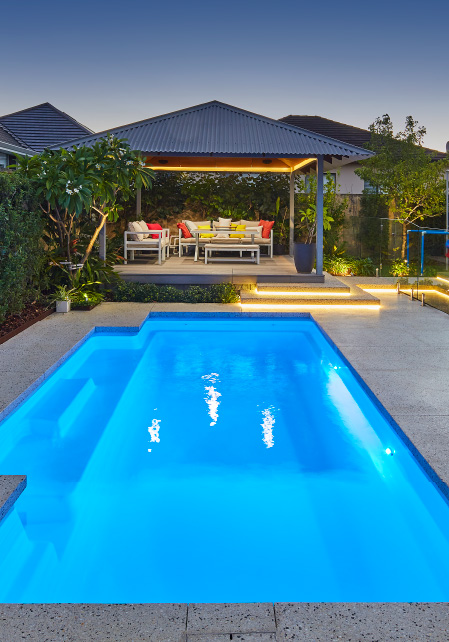
The Upgrade Process: Steps to Transition to a Saltwater Pool
Upgrading to a saltwater pool is a straightforward process involving several key steps:
Step 1: Evaluate Your Existing Pool Equipment
Before starting the upgrade, assess the condition of your current pool equipment. Ensure that your pool’s structure and plumbing are in good shape to handle the new system.
Step 2: Choose a Saltwater Chlorine Generator (SWG)
Selecting the right SWG is crucial. The generator should match your pool size and usage level. Consult with a pool professional to find the best fit for your needs.
Step 3: Drain and Clean the Pool
Draining and thoroughly cleaning your pool ensures that no residual chemicals interfere with the new saltwater system. Remove any debris and scrub the surfaces clean.
Step 4: Install the Saltwater Chlorine Generator
Hire a qualified technician to install the SWG. This involves connecting the generator to your pool’s filtration system and setting up the control unit.
Step 5: Add Salt to the Pool
Calculate the amount of salt needed based on your pool’s volume. Spread the salt evenly and allow it to dissolve fully before turning on the SWG.
Step 6: Balance the Water Chemistry
After the salt dissolves, balance your pool’s water chemistry. Test for pH, alkalinity, and calcium hardness, and adjust as necessary.
Step 7: Start the System
Turn on the SWG and let it run for a few hours. Monitor the chlorine levels to ensure they’re within the recommended range.
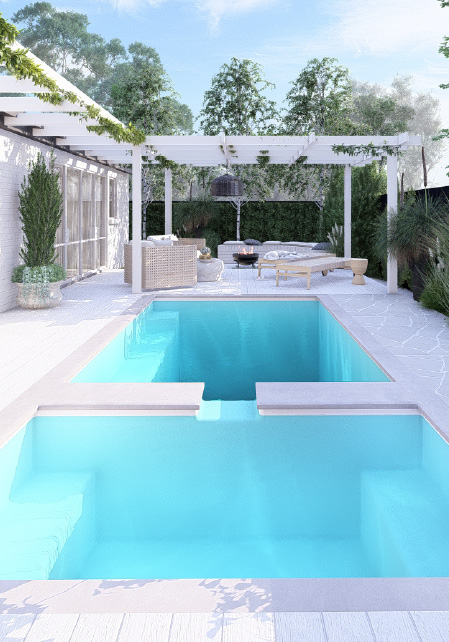
Maintenance of Saltwater Pools: Tips for Optimal Function
Although saltwater pools are relatively low-maintenance, regular upkeep is still essential for optimal performance:
- Regular Testing: Test your pool’s water chemistry weekly. Pay close attention to pH levels, chlorine levels, and salt concentration.
- Inspect the SWG: Check the generator cell regularly for calcium buildup and clean it as needed. Most SWGs come with a self-cleaning feature but manual cleaning might occasionally be required.
- Monitor Salt Levels: Ensure that the salt concentration stays within the manufacturer’s recommended range, typically between 2,700 and 3,400 parts per million (ppm).
- Seasonal Maintenance: Perform a thorough inspection and cleaning of the pool’s components at the beginning and end of each swimming season.
Environmental Impact: How Saltwater Pools Contribute to Sustainability
Saltwater pools offer several environmental benefits over traditional chlorine pools:
- Reduced Chemical Usage: By generating chlorine through a natural process, saltwater pools decrease reliance on chemical chlorine, reducing environmental pollution.
- Lower Carbon Footprint: The reduced need for chemical transportation and storage helps lower the overall carbon footprint associated with pool maintenance.
- Water Conservation: Saltwater pools often require less frequent water changes, contributing to water conservation efforts.
Cost Analysis: Long-term Savings and Investment Considerations
While the initial cost of upgrading to a saltwater system can be significant, it is important to consider the long-term savings:
- Initial Investment: The cost of getting a saltwater chlorine generator varies widely based on size and features.
- Reduced Chemical Costs: Over time, buying fewer chemicals can lead to notable savings annually.
- Lower Maintenance Costs: Automated chlorine generation can reduce the need for frequent maintenance, saving both time and money.
The Future of Pool Systems and the Importance of Sustainable Choices
Upgrading to a saltwater pool system is an investment in both your comfort and the environment. With benefits that include gentler water, lower chemical costs, and reduced maintenance, it’s easy to see why so many pool owners are making the switch. Moreover, the positive environmental impact aligns with growing trends towards sustainable living.
As you consider upgrading your pool system, remember that the future of pool maintenance is moving towards eco-friendly alternatives. By choosing a saltwater pool, you’re not only enhancing your swimming experience but also contributing to a more sustainable world. If you’re ready to take the plunge, consult with a pool professional today and start enjoying the myriad benefits of a saltwater pool system.



